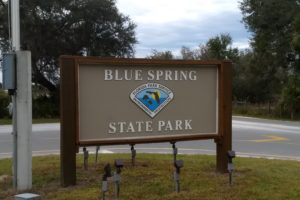We started learning about the history of the conflict between the U.S. and Mexico when we were at the Texas Rangers Museum in Waco, Texas, but that was only the beginning of the conflict. We’d heard of the war with Texas, the U.S.-Mexican War (actually two of them), the Mexican Revolution, and the Republic of the Rio Grande, but we didn’t know when they happened, why they happened, and when were they over. Today we went to a museum that promised to give us the answers we sought. Now we can see how well we can remember and synthesize a wealth of information.

Remember Jane Long, the Mother of Texas? We read about her in part 20 of our Galveston stay. She was part of Stephen F. Austin’s group of colonists that the Mexican government had invited to live just north of the Rio Grande as a buffer between them and the Indians.

1835 – beginning of the Texas Revolution when President Santa Ana changed the rules and upset the balance of power everyone was enjoying. The outcome were the massacre at Goliad, the defense of the Alamo, and the victory at San Jacinto.

For 11 months in 1840, the Republic of the Rio Grande made its stand.


Its main purpose was to provide the rebellion a veil of legitimacy that would allow them to ask for help in Texas and the United States.

The second Texas-Mexican War was between 1842-1844 when Santa Ana regained presidency and refused to recognize the Republic of Texas. Here’s the story.


In 1845, The Republic of Texas joined the United States, and the real problems started. Manifest Destiny said we could go as far west as we wanted, and Mexico, trying to take land further north, didn’t like that.


The war ended in 1848 with the Rio Grande River established as the border between the two countries. Now Brownsville could begin. Enter Charles Stillman, a partner with Richard King of King Ranch fame when they were in business together in the steamship industry before King built his ranch.

Then the Civil War came in the 1860s, on both sides of the border. First for the U.S.

Smuggled supplies in and out of Texas for the Confederate Army through Brownsville. Remember Rhett Butler in Gone With the Wind?



And we have the beginning of the Chisholm Trail right here in Brownsville along the Rio Grande!

Charles Stillman really handled the situation well for himself. He transferred the registry of his ships to Mexico so he could keep making money. His wife had moved back to the Northeast because she couldn’t handle the subtropical weather, and he couldn’t take the chance of visiting her and his children during the war.
Mexican Revolution – 1910

a recipe for disaster
As we read through the bios of the Mexican leaders trying to be in charge over the years and how Pancho Villa kept involving himself, we realized that most if not all were corrupt and really didn’t want to help the people who needed them. Their war sometimes spilled across the river and required U.S. Army troops.





Brownsville to start flying into South America!




Steamboats in the 1840s


In 1870s, the Rio Grande Railroad



a scale for weighing train cars
and locomotives
up to 250,000 lbs!
Rio Grande Railroad became the Southern Pacific

entrance to station 
rear area for deliveries
Charles Stillman’s home, one of the first in the area and one of the finest.


front of house 
garden area

parlor 
dining room

master on the main 
sitting area
I’ve left out a number of pictures that we took today as we walked through the museums, but feel that we’ve covered the basics. Hope you enjoy history as much as we do. Our next post will show us what Brownsville looks like now along the border.




